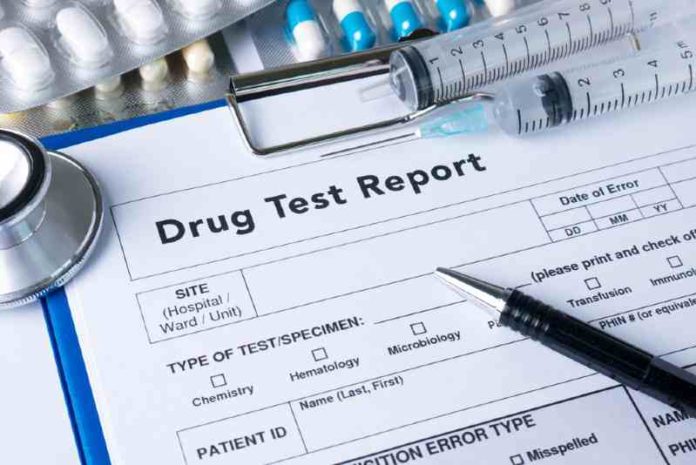An effective drug testing program can help boost productivity, reduce healthcare costs, and promote safety in the workplace. This is the reason why an increasingly large number of private employers are now screening job applicants and employees for drug use even if they are not required by federal and state laws to do so.
In most companies, HR professionals are responsible for managing workplace testing programs, with assistance from third-party vendors. Here in this post, we are sharing seven useful drug testing tips for company HRs:
1. Create a Comprehensive Drug Testing Policy
A workplace drug testing policy should be unambiguous on:
- Chosen drug testing method(s)
- Method of specimen collection
- Who will conduct drug tests?
- Will there be a confirmation test if an employee tests positive?
- Whether drug screening will take place at the job site, office, state-certified laboratory, or elsewhere
- Whether periodic, random or pre-employment drug testing would be conducted
- Whether employees injured or involved in an accident while on-the-job will be drug tested
- How can an employee on medication for an illness make a voluntary disclosure about prescription-strength drugs he is taking?
- How can a test positive worker defend himself?
- Specific consequences that will follow if an employee tests positive
HR professionals should carefully draft an effective drug testing policy that complies with applicable federal, state, and local laws. In the United States, for instance, laws governing workplace drug screening vary across states, cities, and counties.
A testing policy should be communicated to all employees (or job-applicants) in writing. If necessary, HR managers can also hold a seminar on the subject and explain the elements of a new drug screening policy for all employees.
An organization should get written consent from all employees or job-applicants before implementing a new or updated drug screening policy to avoid legal hurdles later on.
2. Consider the Detection Window of a Drug Testing Method
You need to decide if your company needs to screen job applicants and existing employees for recent drug use or identify chronic drug addicts.
A combination of different drug testing methods based on the analysis of specimens such as urine, hair follicle, sweat, mouth swab, blood, etc. can be used for comprehensive workplace drug screening.
A urinalysis, for instance, will detect the presence of an illegal drug in the system long after its effects have worn off. However, the window of drug detection varies by the drug. Urinalysis can detect the use of short-acting barbiturates, amphetamines, PCP, cocaine, heroin, and morphine within 24 hours, 48 hours, 8 days, 2-4 days, 2 days, and 2-3 days respectively.
3. Train Managers and Supervisors
Once a drug testing policy is implemented, the HR department should train managers and supervisors on related processes and skills:
- How to identify the warning signs of drug abuse in the workplace for reasonable-suspicion based testing
- How to document potential signs of drug abuse by a worker
- How to refer an employee with a drug problem for help
- How to motivate workers to avoid taking illegal drugs
4. Be Completely Transparent
Drug tests should be administered consistently and transparently across an organization.
The management, as well as the HR department, should ensure that the rules are not bent or made flexible for anyone.
Well-defined rules fairly applied to each and everyone help boost employee morale and encourage positive behavior.
5. Preempt the Possibility of Cheating
An employee with drug problems will try to get around a drug test.
There are tons of tips and tricks on the Internet on how to beat a drug test. From substituting or adulterating specimens to ingesting excessive amounts of water, employees may try out different methods to pass a drug test.
So, it is advisable to learn about the standard employee testing procedures and perform due diligence when choosing a certified-laboratory or vendor for administering drug tests to eliminate the opportunity to get around workplace drug tests.
6. Screen for Drugs Commonly Abused in a Region
When selecting a testing method, it is important to take regional patterns of drug abuse, employee demographics, and the nature of work into consideration.
Unless employers or HR professionals know which drugs to monitor, drug testing cannot deliver satisfactory results.
A drug testing policy should explicitly mention the list of controlled substances that employees are to be tested for.
7. Take Note of How Employees Perceive a Testing Policy
Workplace drug testing can sure help filter out substance abusers but employers and HR professionals should try their level best to create a positive perception around this initiative.
Workers should get the message that testing can help create a safer workplace for everyone. It is also a good idea to organize monthly or quarterly seminars to spread awareness on the subject.
Leon Reingold is the Editor-in-Chief at Drugtestsinbulk, a nationwide supplier of drug and alcohol testing products online.
Testing stock photo by one photo/Shutterstock







